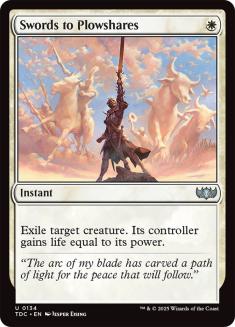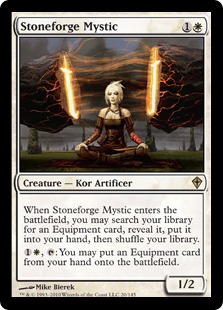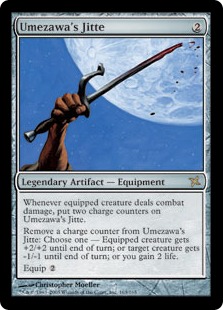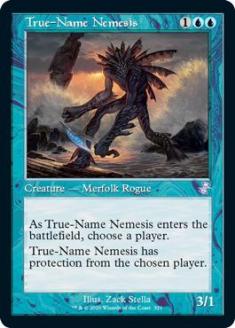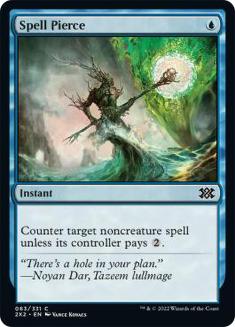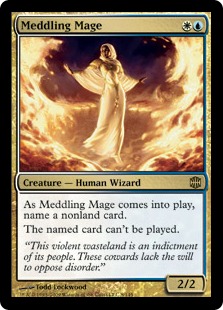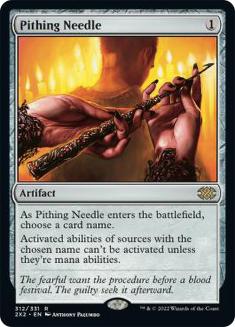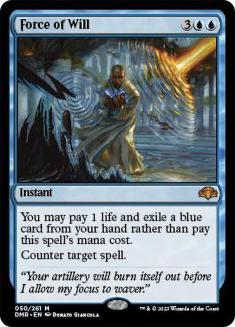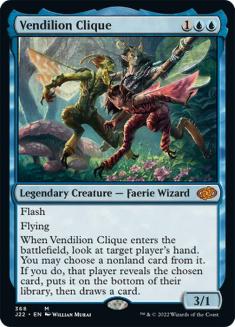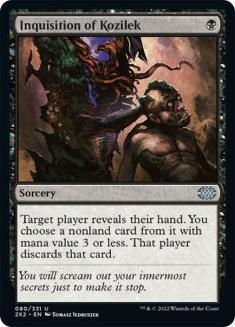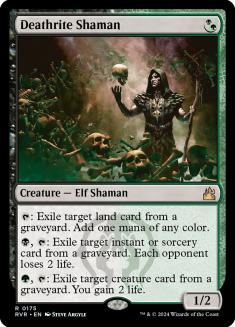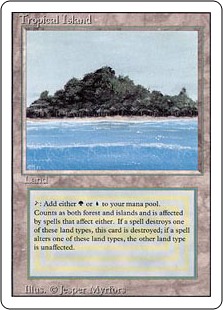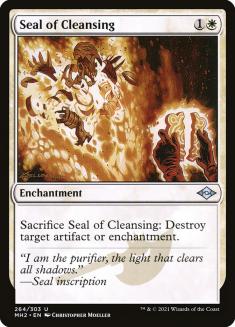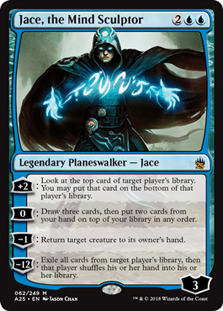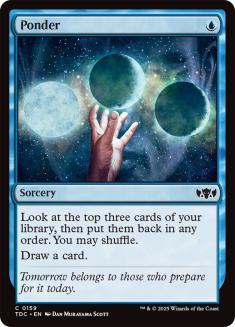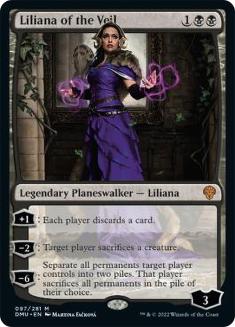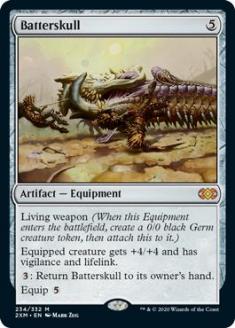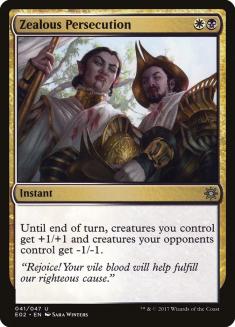I embarked to the lovely city of Baltimore last weekend for the StarCityGames.com Open Series. It had been almost an entire month since I played in any
Magic related tournament. I say “Magic related” due to the fact that my last tournament was not Magic related at all but did involve teaming up with my
Grandmother in a rousing Corn Hole tournament in which we placed third. Not a bad finish when you factor in that she had to carry me the entire way to
bronze. That woman could throw a bag of beans! Needless to say I was ecstatic to get back to what I do best. I sleeved up Mono-Black Devotion in Standard
and Esper Deathblade in Legacy.
Short story even shorter, I did terribly in Standard. The decklist I wrote about last week wasn’t as good as I originally hoped.
Luckily for my credibility, Jeremy Bowman took my maindeck to a top 8 finish. I told you guys I was right! The other major factor was variance. I swear
that nothing was going right for me.
Now I understand that bad beat stories are the most long winded and boring stories any Magic player can force you to suffer through so I will explain what
happened to me in the simplest way imaginable.
“The cards I put in my deck did not do what they were supposed to while my opponent’s cards did.”
It’s as simple as that. Sure I can go to the root of all evil and explain how I was dead before I entered since I now know that my list was flawed from the
get go, but that isn’t the reason we are here today. Oh, no it just isn’t that simple. You see, I am telling you all of this because the next day was much
different. The next day was Legacy! The wonderful world where you can play the wrong land, search for the wrong dual, play the wrong spell, and even
resolve the spell incorrectly; all as early as turn 1!
The most punishing and beautiful format in Magic.
I have slowly been falling in love with Legacy, but this past weekend nailed it home for me. Legacy is just the best format in Magic. It’s enjoyable to
play, rewards technical skill, reduces variance, and never gets stale. Even the cards rarely lose value!
I’m guessing some of you might be out there thinking to yourselves,” Brad’s just saying this because he works for StarCityGames and they want to promote
the format.” You almost hit it on the head. The only problem with your assessment is that I want to promote the format. I used to hate it and
always viewed it as a chore to prepare for when I attended Invitationals.
The reason for my new found love for the format is I finally discovered “the” deck. You know, that one and only deck you never thought existed and even if
it did you would never run across it in a million years on this Labyrinth we call planet Earth. That one. I found that one! I found my one and only and we
make such a good couple that the bards may sign songs about our love. In this fantasy even the birds begin to chirp along to the angelic music.

There is also one other major factor to why I love this format. This past weekend I finished 7-2 for a twenty-first place finish. This is the perfect place
since if you add those two numbers together you will get the total of blatant mistakes I made in the tournament. All three of those mistakes cost me games
that also cost me match losses. Anyone who plays Magic seriously can relate to the fact that it is quite refreshing to only lose matches in tournaments to
your own wrongdoing. It gives you that sense that everything is right in the world, and we create our own path.
So without further adieu, I present you with my first ever breakdown of a Legacy deck!
Creatures (13)
Planeswalkers (4)
Lands (23)
Spells (20)

Esper Deathblade have been a thing for a long time now but somehow lost its following ever since True-Name Nemesis came onto the scene. Prior to this mini
Progenitus’s existence, the deck played Geist of Saint Traft in its absence. Underground Sea into Savannah was the name of the game I was happy to play and
one that gave me my first good finishes in the format. I went 7-1 in an Invitational with the deck, and soon after that I started 6-0 in an eight round
Legacy Open. Sadly I was forced to play the last two rounds and took two depressing losses to evade the ever elusive first Legacy Open top 8.
For some reason I put down the deck and started listening to my friends again. It’s tough to say they steered me wrong since I did in fact win an
Invitational with Sneak and Show, but I don’t believe that included play skill. I simply got lucky with a deck designed to do exactly that.
Preparing for the Season Two Invitational started off with me doing something I have never done in the format before: I listened to myself and prepared
with a deck of my own choosing. Everyone I talked to told me that Esper Deathblade was a bad deck and to not play it. The reasons they gave me were even
well-constructed and thought out, but for some reason I pushed through and committed to coming to my own conclusions on the deck. My conclusions did not
exactly coincide with theirs, and I was able to understand why they came to the conclusion that the deck is bad.
Deathblade looks bad!
It’s as easy as that. It’s an embarrassing deck to lose with on camera. The opposing player is resolving a Griselbrand, a Blood Moon, Counterbalance +
Sensei’s Divining Top, attacking with Craterhoof Behemoth plus friends, or simply Dazing a spell prior to their mad scientist taking his go-go juice. Esper
Deathblade never does anything flashier than attacking with a 3/1 or equipping Brian Braun-Duin to an unimpressive battering skull. The deck is a
concoction of cards that are good against combo as well as aggro, but can always draw the wrong side at any time in a game which means that it is never
really in control of the situation. It’s clock isn’t fast enough for any opponent to simply draw out of a bad spot, so Esper Deathblade might even lose a
game it’s been “winning” since turn 1.
The secret to the deck is to play perfectly. I understand that these aren’t the wisest words to ever be uttered about Magic, but that really is how you
benefit by playing this deck. It’s difficult to pilot through a large field, but if you play tight you will be rewarded. The other secret to the deck’s
success is it has the most impacting sideboard in the format. Every time I win a game 1, I give myself a mental high-five because I know just how much
easier it will be to do that a second time.
The best way to view Esper Deathblade is to understand that it is only as good as its board position. This deck is not a control deck and should never be
viewed as one. It might not be as aggressive as any Delver of Secrets deck, but that doesn’t mean it shouldn’t be trying to build a board position while
also disrupting an opponent. The key to all of this is timing.
Timing a Thoughtseize can be one of the most crucial aspects to this deck. This is not a card you simply jam to know what is up because you will always be
punished for this act. Not only can they respond with a Brainstorm to leave you taking one of their worst cards, but the information you gain when casting
it will be irrelevant by the time you are wanting to make a crucial decision about how the game is going to play out. It also lets them know they are
getting Thoughtseized!
An opponent is trying to create a game plan just as you are. They will make decisions and play around things the same as you, but they will assume that a
Thoughtseize would have already been cast. This means they are not thinking about the wrench that is about to be thrown into their engine and can sometimes
dismantle multiple turns of set up. Now you don’t want to wait too long without added backup, but it is never a bad thing to wait just a little bit to pull
the trigger on this card. It can be extremely beneficial.
One of the strongest lines for Thoughtseize against a deck with Brainstorm is to wait until turn 2 to cast it with Spell Pierce backup. The reason for this
is to bait out an opponent’s Brainstorm. By casting the Thoughtseize before an opponent has access to three mana, you are able to snag a Brainstorm at the
most opportune time as well as their best card without fear of them putting it on top of their deck. This one-two punch allows you to not only get a true
representation of what is going on, but only allows them one turn to draw something to disrupt the line you want to create on turn 3.
Another overlooked play with Thoughtseize is casting it before a Stoneforge Mystic wielding opponent cast’s their namesake spell. By waiting a few turns
you can simply snag their Batterskull and leave them with a squire for all their troubles. He will then politely wave to your Deathrite Shaman from across
the battlefield instead of holding a séance for his beloved BBD.
Now there are thousands of small plays that may seem innocuous but have a major impact on the way games will play out. So many, in fact, that I don’t think
I could remember them all to write about nor would you guys appreciate me going over all of them in one article. Instead, I want to take most of my time to
talk about all the important matchups you will come to face with the deck and how I sideboard and play against all of them. Sounds like a more productive
use of our time!
If there are any questions you have about the decks subtleties, please ask away, and I will do my best to answer them in a reasonable amount of time.
Vs Sneak and Show
Game 1 is all about keeping them from resolving Show and Tell or Sneak Attack. We do have access to a Karakas to help protect ourselves from half of the
combo, but they can easily play around it with Sneak Attack and multiple red sources. That is why it is crucial to get a clock on the board and use
Wasteland and Thoughtseize as aggressively as possible. Wasteland might seem like it won’t matter on a two-mana land, but it can be the difference of
playing around Spell Pierce or not, and that is something always on the opponent’s mind.
The games get much better after sideboard. Trust me.
Out:
In:
One of the biggest differences with my version of the deck compared to most is the exclusion of Snapcaster Mage and the inclusion of Pithing Needle and a
permanent-based sideboard. Whenever building a deck I always look for a way to board in 7-11 cards in almost every matchup. The only way to do this is to
find cards that have the potential to be boarded in against a wide range of decks but to also find a game plan that can exist with those cards. Pithing
Needle alongside Meddling Mage is exactly that.
There are a plethora of matchups where both of these cards can work hand-in-hand at defeating opposing synergies. In this matchup, the duo comes into play
and names Sneak Attack and Show and Tell. This “soft lock” will keep them from playing anything outside of a Through the Breach to get a fatty into play.
The reason for this permanent-based sideboard is the simple fact that I like proactive disruption. Obviously I’m going to want some countermagic, but it is
crucial that you are presenting problems the same way your opponent is. The strategy of playing disruptive disruption will force the opponent to not only
have the answer to our permanents, but also the combo itself. Without the fear of permanent-based disruption, the opposing combo deck will simply have all
the time in the world to sculpt a perfect hand with the combo plus an assortment of counters to protect it. You just have to be aggressive.
The game plan for the matchup doesn’t change after sideboard, but we do have some significantly stronger ways to improve our chances. For starters, you
will want to use your hand disruption a little bit more aggressive depending on how many Pithing Needles/Meddling Mages you have access to. Vendilion
Clique also acts as a “hate bear” since it will be able to come down at any time, but most importantly when they put Show and Tell on the stack. This
becomes a card they must Force of Will and allows us to freely Force of Will the Show and Tell.
Vs Miracles
This can be a fairly tough matchup and one that you are forced to stay aggressive. Miracles is a deck trying to gain inevitability while your only source
of long game involves a BBD token. Needless to say, you don’t want to see whose late game is better. The way to attack game one is to never let Sensei’s
Divining Top resolve. Force of Will it if you have to, but they will not need many turns to lock you out if they have access to the top of their deck in
game 1.
Out:
In:
The games play out much differently after sideboard. They can still get us in the “hard lock” of Sensei’s Divining Top + Counterbalance, and that is why we
bring in so many ways to stop it. Just a single Pithing Needle can swing the matchup in our favor since it will lock out all four tops.
Meddling Mage comes in during this matchup to allow us to lock out the decks miracles. The first should always name Terminus and the second can be a choice
between Supreme Verdict and Entreat the Angels depending on board position. Sure they will have the ability to kill the Meddling Mage naming Terminus, but
this will force them to use multiple spells to set this up, and it won’t be that backbreaking since it won’t be a simple to create three-for-one like it is
normally.
Lastly it is crucial to hold a Thoughtseize for their Batterskulls. We do not want too many answers for Stoneforge Mystic in against them since
they only run this package to be annoying against other midrange decks, so it is important to never get blown out by it. Just patiently hold a Thoughtseize
for most of the game until you need to resolve a backbreaking spell or they play Stoneforge Mystic. It’s as simple as that.
Vs Delver Variants
Each Delver deck is unique enough in its own way, but the general principles for the matchups are universal. You are not the control player! Do not think
in this way or you will never beat them. You are simply another deck trying to attack while you keep the board in your favor. You need to not play around
everything they could ever have, but instead force them to have it most of the time. Trust me on this. They will try to resolve a threat and protect it
with counter magic. This is the way they beat combo decks. If we get scared against their spells, we will be slowing down just long enough for those exact
spells to kill us.
Instead, we just jam our spells. We cast them and see what happens. We do have more powerful cards then them and can also get just as aggressive with
True-Name Nemesis. We can kill their threats with Swords to Plowshares, yet they cannot kill ours. This is our advantage. We also have way more threats
than they have answers.
Now it will be beneficial to play around certain things at certain times, but never around everything all the time.
Out vs RUG Delver:
In vs RUG Delver:
Out vs UWR Delver:
In vs UWR Delver:
Out vs BUG Delver:
In vs BUG Delver:
VS Combo Elves
I have never felt more like a bad guy than when I play this matchup. Elves is just a little cute deck trying to find their Craterhoof Behemoth, and we come
in a destroy everything that is beautiful and right in the world of Legacy. Seriously, this is a joke matchup. Kill their ways to draw cards, counter their
Natural Orders, and wait until Umezawa’s Jitte shows up and squashes any hopes they had of finding a way to win the game.
Out:
In:
Vs Death and Taxes:
The matchup against the little white creatures can be just as easy as the green ones, but you will have to know what you’re doing. Death and Taxes is
designed to make us screw up and get punished for doing so. This means that everything has to be well thought out and our lines prepared in advance. You
have to know how you are going to win the game before making any key plays in the mid-game.
Often times the games come down to them not having enough pressure and us sticking a True-Name Nemesis or two to keep the pressure on. Just like in any
other Stoneforge Mystic deck, we will want to save our Thoughtseizes for their equipment and just spend most of our time trying to resolve permanents.
Lands are good in this matchup so I often times hold my Brainstorms for situations where I need one to either pitch it to Force of Will or to get rid of
them in the late game. It isn’t the most important card if they have Cavern of Souls or Aether Vials.
Out:
In:
The game plan after sideboarding is simple: keep everything off the table. This is easy when we have enough lands to cast our spells and difficult when we
do not. This is why it is crucial to keep hands that have access to 3-5 lands and mulligan those that do not.
This is a great place to stop for the day. There are just too many matchups in the format to talk about that I don’t want to bore you with each matchup. I
also have a Pro Tour to test for! Team Revolution was gracious enough to let me join their squad for this event, and I don’t want to disappoint. Instead of
trying to go over everything in the article, I think the best way to move forward is to answer questions that you guys have. Anyway, wish me luck during
the testing process and I will see you guys next week!

